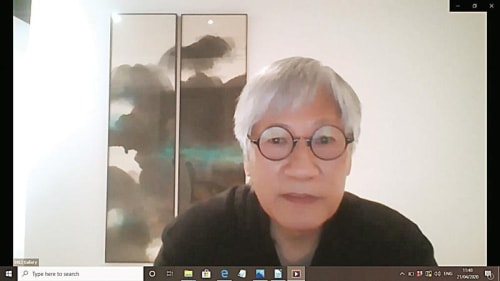The Hong Kong government has extended the temporary closure of cultural venues to contain the spread of COVID-19 until May 7. Most privately-run art spaces remain closed as well. However, it would be a mistake to assume that the art galleries, auction houses, art fair organizers, non-profit art support groups, and other components of Hong Kong's vibrant art eco-system are sitting idle in the absence of a live audience. Like elsewhere in the world, much of the activity on the Hong Kong art scene is now taking place in the virtual space.
Hong Kong's 3812 Gallery held its first online panel on April 10, drawing nearly 8,000 art lovers who logged in via the online video conferencing app Zoom or Zai Art - China's leading social network for art review. Participants included ink artist Raymond Fung, 3812 Gallery co-founder and chairman, Calvin Hui, and Katie Hill, program director, MA Modern and Contemporary Asian Art, Sotheby's Institute of Art, joining in from London.
During the webinar, Fung went over the highlights from his 40-year career. His presentation was illustrated by landscapes painted in his native Sai Kung, sculptures resembling paper boats, and perhaps his most famous piece - a 2-kilometer-long installation in West Kowloon Cultural District's waterfront promenade.
Also on show was Fung's installation, A Dialogue with Wu Guanzhong, currently covering a window on the first floor of Hong Kong Museum of Art. Roof tiles from the original structure of the museum which has since undergone a massive overhaul have been used to create figures of flying seabirds, set off against the natural backdrop of the Victoria Harbour. Fung said the piece represents a request to the Hong Kong government to avoid over-development. "My statement is very clear, build less for more, to preserve natural beauty," he said.
Hill noted how Fung's works were like a homage to over 1,000 years of Chinese ink art. "There are things like bright splashes of colour which not only remind me of works from the Tang Dynasty (608-907 CE), but also some of the modern masters." She asked Fung about his preference for multiple panels in a single piece. The artist explained that the format suited the wide, horizontal expanse of the landscapes he drew.
Click to read the article online


